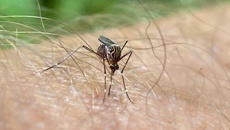There have been 13,880 new community cases of Covid-19 in the past week, the lowest number in three months, the Ministry of Health reported today.
There were 79 virus-related deaths, 242 people are in hospital as at midnight Sunday and seven in ICU.
The ministry reported two of the dead were from Northland, 24 from Auckland region, six from Waikato, five from Bay of Plenty, two from Lakes, one was from Tairawhiti, two were from Hawke’s Bay, one from Taranaki, six from MidCentral, three from Wellington region, three from Nelson Marlborough, 12 from Canterbury, two from South Canterbury and 10 from Southern.
One was younger than 10 years old, two were in their 20s, two in their 40s, seven in their 50s, 12 in their 60s, 10 in their 70s, 27 were in their 80s and 18 were aged over 90. Of these people, 50 were women and 29 were men.
The “variant soup” behind New Zealand’s latest Covid-19 wave has only grown more complex, with tricky hybrid strains like the newly arrived Kraken making up a fast-growing chunk of sequenced cases.
While most coronavirus infections last year were caused by a handful of Omicron types – namely BA.2 and BA.5 - ESR’s latest surveillance update showed a diverse mix of lineages was now driving spread.
Case numbers have been slowly dropping towards the 1000-mark after a Christmas bump.
That’s in line with drops in hospitalisations, with just over 400 cases as at the start of the week, but also a rise in reported reinfections, now at around 40 per cent, with the true proportion likely much higher.
BA.5, largely responsible for last year’s winter wave, accounted for only about 9 per cent of cases sequenced over the month to January 13, with CH.1.1 making up roughly a third.
That subtype – a descendant of BA.2, which likely caused most of the country’s first Omicron infections – sported the same genetic mutations as the more recently introduced BQ.1.1, which already accounted for 15 per cent of cases.
- China rings in Year of Rabbit with most COVID rules lifted
- Hong Kong to scrap isolation rule for new COVID-19 cases
- Risk of debilitating illness from long Covid could grow - Michael Baker
Nicknamed Cerberus, BQ.1.1 and fellow BA.5 off-shoot BQ.1 (Typhoon) fuelled a tide of infections in the US and France last year, owing to their ability to better escape immunity from first and booster vaccines.
Also in the mix were BA.2.75, or Centaurus - a second-generation subvariant of BA.2 making up 17 per cent of cases – and a handful of “recombinant” strains created by two viruses swapping genetic material and typically designated with an X.
These include XBF (19 per cent of cases) XBC (four per cent) and XBB (two per cent) - and at presently-low levels, XBB 1.5, better known as Kraken.
The World Health Organisation (WHO) has labelled Kraken – now causing large numbers of infections across the US - “the most transmissible subvariant that has been detected yet”.
It’s also been detected in Australia, the UK and several European countries including Denmark, France, Germany, and Spain.
According to the US Centers for Disease Control and Prevention (CDC), more than 40 per cent of the country’s infections have been caused by XBB.1.5.
This month, Otago University epidemiologist Professor Michael Baker warned it could also drive many more infections here.
Yet, there were some promising signs its global growth was slowing.
These mutant strains sometimes arise from a person being infected twice at the same time – as may have happened with the very first major Omicron recombinant that Kiwis learned of.
That was XE, a hybrid of BA.1 and BA.2, that was initially estimated to have been about 10 per cent more transmissible than BA.2 when it was detected here for the first time in late April.
Meanwhile, XBC, which packed a staggering 130 mutations, happened to be one of several so-called “Deltacron” subvariants now floating about the world.
While any lineage with the potential to combine Omicron’s faster transmissibility with Delta’s higher severity might be worrying, none of the mostly Asian countries that have registered XBC cases have seen any notable rise in deaths.
Otago University evolutionary virologist Dr Jemma Geoghegan said it wasn’t unexpected to see recombinant strains now making up such a big part of the picture, given so many variants have been co-existing.
Scientists have watched many of these strains develop independently – but all while acquiring similar traits in response to the same selective pressures – making for one of the world’s most fascinating cases of “convergent” evolution.
Nevertheless, Geoghegan said the rate at which these strains were emerging continued to surprise here.
“We’ve got a few examples of this happening in nature, but not too many in virus evolution.”
The question facing scientists like Geoghegan now was whether Omicron – today a family of hundreds of identified lineages – stayed in the pandemic’s driver’s seat.
/cloudfront-ap-southeast-2.images.arcpublishing.com/nzme/QBBNVT4VB5GKBGVALWNND34ZU4.jpg) Otago University virologist Dr Jemma Geoghegan. Photo / Supplied
Otago University virologist Dr Jemma Geoghegan. Photo / Supplied
“It’ll be interesting to see what happens next, and if it continues on its path, we’re going to see a lot more convergent evolution and recombination,” she said.
“It’s clearly got a long way to go.”
Why viruses like Sars-CoV-2 evolved in the first place was more straightforward.
In simple terms, the longer and more easily a virus is able to jump between us, the quicker it learns how to infect us.
This happens through viruses copying their own genomes through replication, a process that inevitably causes mistakes - or what we know better as mutations.
If it finds a certain mutation offers some kind of advantage, like better invading our cells, then that useful “mistake” sticks.
And in all of the Covid-19 variants we’ve seen so far, a key feature has been clever combinations of specific, structure-changing mutations that help them spread even quicker.
These mostly tended to occur around the virus’ “spike protein”, which it used to latch on to a specific receptor that gave it entry to our cells – and it’s just what’s played out within Omicron’s evolution.
The Government is expected to soon roll out a new “bivalent” booster, targeted at BA.5, and shown to perform better against currently circulating variants.
Take your Radio, Podcasts and Music with you









